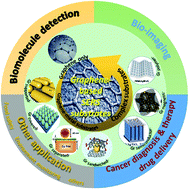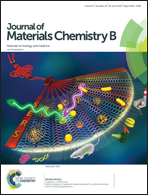Recent progress on graphene-based substrates for surface-enhanced Raman scattering applications
Abstract
Since the intriguing and inspiring discovery of graphene-enhanced Raman scattering (GERS) in 2010, graphene and graphene-based substrates have attracted significant attention in both theoretical research and application exploration of surface-enhanced Raman scattering (SERS); this makes graphene-involved SERS a burgeoning area in many scientific branches. The introduction of graphene not only overcomes some intrinsic drawbacks of SERS, but also has a great synergistic effect with traditional noble metal nanoparticle enhancement substrates and thus greatly improves the sensing performance of SERS and largely expands its application area. To better learn about the recent progress in graphene-based SERS substrates and shed light on future research, an overview of graphene and graphene-based SERS substrates is presented herein. In this review, the role played by graphene in graphene-based SERS substrates is first summarized, and then, the classification and preparation methods of graphene-based substrates are presented, which are helpful for understanding the structure–property relationship. Furthermore, the SERS applications of graphene-based substrates in biomedical areas, including biomolecule detection, bio-imaging, cancer diagnosis and therapy and drug delivery, are highlighted. Other applications in hot-topic areas such as food safety and environmental monitoring are also briefly discussed. Finally, challenges and perspectives on the deficiencies, future development and achievements are presented.

- This article is part of the themed collection: Recent Review Articles


 Please wait while we load your content...
Please wait while we load your content...